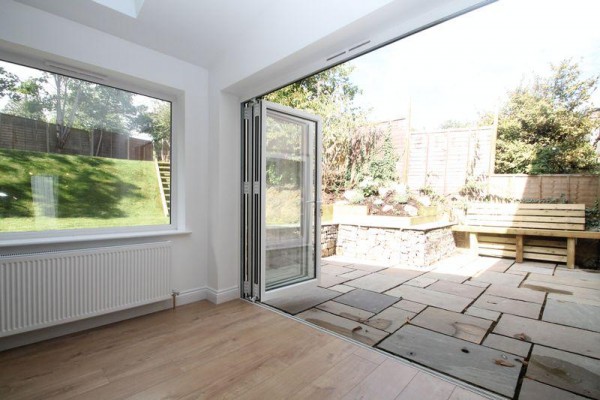Today, bifold doors are considered designer doors by the people who buy and sell them. Architects and building contractors alike have served as catalysts in the growing use of these types of doors. Builders like bifold doors as they can be designed in various colours and materials. When customised, they often come attached with features such as auto-latch arms, remote control, and a variety of configuration options.
A Flexible Installation
Whilst bifold doors are normally used in residences, they also are featured at arenas, fitness facilities, and theatres. Usually, bifold doors for residences are made of aluminium or timber with various finish and threshold options. This type of adaptability provides more flexibility to an interior space.
In fact, the threshold feature of these doors makes this kind of upgrade a well-recognised home improvement. That is because the amenity brings the outdoors inside a home and creates a seamless connection between the interior of a house and the garden or patio.
Keeping the Water Out
Most door thresholds have a rebate, or an upstand that creates a physical barrier against the entry of water. It also keeps the doors sealed. The rebate, which can be seen around a door’s frame, is normally fashioned with a brush, nylon, or rubber seal to prevent air or water ingress. For example, the threshold for bifold patio doors features a rebated design that gives the doors a weather rating. Therefore, one ideal feature of a rebated threshold is that it can be sunk below floor level to create as flush a threshold as possible.
However, a flush threshold, by definition, does not feature a rebate, and is therefore configured with a low ramp type of design. This type of door thus features no weather rating. Whilst this does not mean that this type of installation will leak, it means that you have to be aware of this aspect if you want to choose this type of upgrade.
Installing Bifold Doors with a Low Threshold
If new bifold doors are fitted then, with a low threshold and in a sheltered setting, they probably will be sufficient to protect inhabitants from driving rainstorms. As long as a canopy is installed above the doors, they will offer adequate protection. This type of application is naturally preferred over a low threshold door that is fitted in an exposed location. Unless it is a high-end air door and has a weather rating, you cannot always be assured of a low-threshold door’s resistance to the wind or rain.
In most cases, bifold doors with low thresholds that do not have a recognised weather rating are intended for internal installations, such as a room divider. Therefore, you need to consider the location and use of your bifold door installation. A rebated threshold is the best type of door design as the door can be set lower with only a marginal upstand. For instance, a 12mm upstand will not be noticed and will give you added peace of mind when it is windy or rainy outside.

